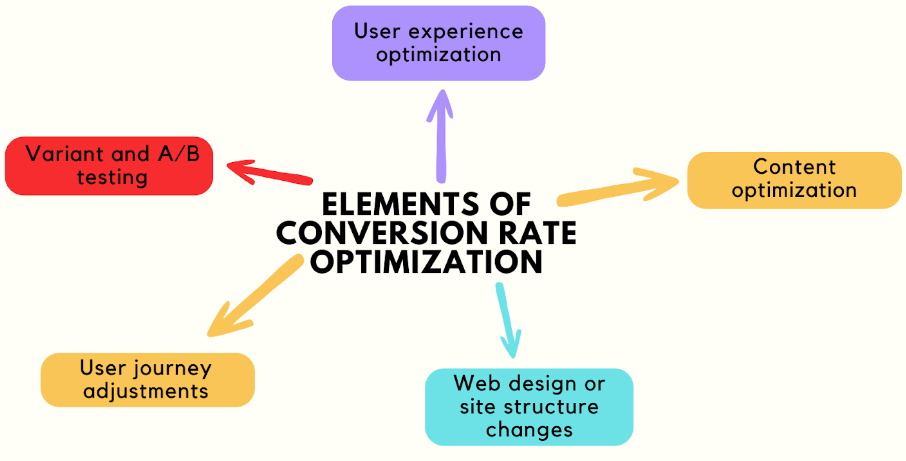The Fundamentals Of Conversion Rate Optimization In Affiliate Marketing
Conversion Rate Optimization (CRO) is one of those things in affiliate marketing that can really make the difference between spinning your wheels and seeing some real results. It basically means making smart changes to your website or content so a bigger percentage of your visitors actually take action, like clicking your affiliate links or grabbing a recommended product. CRO changes a so-so blog into a revenue driver. You won’t even need more traffic to see bigger rewards.

Why CRO Is Really Important for Affiliate Marketers
CRO isn’t just icing on the cake if you’re an affiliate—it’s your bread and butter. When you dial in your conversion rates, you’re basically making every visitor count for more. So, if you’re promoting products as an affiliate, boosting those rates means you get more commissions, even if your site traffic stays the same. It’s a practical way to get paid more for the same amount of effort.
If you ignore CRO, you can end up sinking energy and resources into creating content, only to see people drop off before they click any links. On the flip side, a few tweaks can mean the difference between a trickle and a steady flow of commissions rolling in.
How CRO Works in Affiliate Marketing
CRO focuses on getting people from Point A (landing on your website) to Point B (taking an action that earns you money) as smoothly as possible. In affiliate marketing, those actions could be clicking links, signing up for a free trial, or making a direct purchase. Here’s the breakdown:
- Analyzing User Behavior: Pay close attention to where visitors click, scroll, and bounce. Tools like Google Analytics, Hotjar, and Microsoft Clarity are very useful for this.
- Experimenting and Testing: Always run sample experiments on things like button colors, CTA(Call-To-Action) wording, or page layouts to see what gets people moving.
- Fine Tuning Content: Update content to be MORE clearer or more persuasive based on what content is being added.
By tackling those steps, you can create more effective, user-focused content that moves the needle in earning affiliate commissions.
Creating a Visitor-Friendly Website Experience

Before you even worry about CTAs or link placements, you need to make sure your website isn’t driving people away. A well-designed, speedy site builds trust and keeps visitors sticking around long enough to see your offers.
- Fast Loading Times: If your website takes forever to load, a lot of folks will just bail. Compress images, limit plugins, and use caching tools to get things running smoothly.
- Simple Navigation: If visitors get lost or can’t figure out what to click next, they’re probably gone for good. I keep menus simple and make sure every page can be reached in a couple of clicks.
- Mobile-Friendly Design: Since a big chunk of traffic comes from phones, a site that works on mobile helps more people see and interact with your affiliate links.
These basics are super important. If you’re starting out, improving these things helps set the stage for higher conversions down the line. Google now favors mobile-optimized, fast websites, so giving your site a speed and usability boost can help with both your conversions and search rankings.
The Power of Compelling Call to Action (CTA) Buttons
One of the top tips for beginners is to make CTAs clear and specific. Something generic like “Click Here” fades into the background. If you want visitors to act, try buttons that say exactly what they’ll get, such as “Unlock 10% Off Now” or “Start Your Free 7Day Trial.”
- Placement Matters: Putting your main CTA button above the fold (the part visible right as the page loads) gives it more attention.
- Button Color and Size: A bright, contrasting color can catch the eye, but you don’t want to go overboard. Make sure it stands out without clashing with your overall design. Test a few different looks to see what performs best.
- Direct Language: Short and action-driven messages usually work better than anything vague or technical.
It’s always surprising by how much just one or two small changes to CTAs can impact clickthrough rates. A/B testing (comparing two versions of a page) helps confirm which tweaks are worth keeping. A simple wording switch or nailing the perfect button color can give your clicks a real boost.
Essential Elements to Test and Optimize First

If you’re new to affiliate marketing, there’s no need to get overwhelmed. Start with a few key areas and build from there:
- Headlines: Try out different headline styles or promises and see which ones grab attention and encourage people to keep reading. Use curiosity or direct benefits.
- Button Placement: Move CTA buttons around the page and check if having them higher up or repeating them at the end makes a difference.
- Affiliate Link Formatting: Make links easy to spot so people actually notice them. Use recognizable icons or bolded text so they don’t blend in with regular content. Sometimes, even creating “comparison” buttons for the same offer helps people notice.
- Content Spacing and Breaks: Large walls of text are a turnoff. Use short paragraphs, bullet points, and images to make things easier to digest. Readers like scanning, so make it easy for them.
- Landing Page Optimization: Design dedicated landing pages for affiliate products. These should have a focused message, benefits-driven content and clear Next steps.
Focus on these basics first and gradually try more advanced ideas and then you will start seeing what works with a specific audience. Over time, you’ll get a feel for how your readers move through your content and what nudges them to click.
Practical Challenges in CRO (and How to Tackle Them)
CRO in affiliate marketing sounds pretty straightforward, but it can get tricky. Here’s how to handle these challenges:
- Information Overload: Sometimes visitors get hit with too many choices or blocks of information. The focus should be to simplify pages, cutting out anything that’s not necessary, so visitors see only what they need to act on. Highlight your best offers and keep side options to a minimum to help visitors make decisions faster.
- Slow Site Speed: Sluggish websites can wipe out conversion rates. Use free speed tests like Google PageSpeed Insights and keep things lightweight. Even something as small as a large image can slow things down, so you should regularly check and compress files.
- No Trust Signals: People don’t click or buy if they don’t trust your recommendations. Include personal reviews, testimonials, or trust badges (like “Verified Purchase” or software security icons) to build trust fast. Genuine stories or “before and after” photos work wonders here.
- Device Compatibility: Sometimes elements like buttons or popups look weird on phones or tablets. Always check my changes across different devices to catch these hiccups before they cost me clicks. Free tools like BrowserStack can help you spot these issues.
Site Speed
In terms of speed, it is surprising to notice that even a one second delay in site loading can make visitor drop-off numbers spike. Compress images, avoid fancy scripts, and stick to reliable hosting to keep things snappy. A fast site isn’t just about higher conversions, it also helps with your site’s ranking on Google. This also makes loading time a priority in that it brings instant wins for both user experience and revenue.
Adding Trust Signals
A lot of new affiliates don’t realize how important trust is. Adding little details like up-to-date testimonials, security badges, or even a quick about page where you share your experience can make a world of difference. It’s important to share photos of gear personally used to show visitors that you’re not just repeating what someone else said. Trust can be the final push that gets a visitor to click your affiliate link.
CRO Tactics That Are Worth Testing in Affiliate Marketing

Once you’ve nailed the basics, you can get creative with testing some CRO tactics that often pay off:
- Comparison Tables: Lay out the pros and cons of similar products side by side, linking to each affiliate offer. People like quick, clear choices, so a table that sums things up makes decision-making easier.
- Exit-Intent Popups: If someone’s about to leave your site, a lastminute offer or reminder to check a deal can save conversions you’d otherwise lose. Just don’t use too many popups, or you’ll annoy visitors.
- Sticky Bars or Floating CTAs: These follow the reader as they scroll, so your best offer is always visible. This subtle nudge can help someone decide to click right when they’re ready.
- Customer Reviews and User Ratings: Real feedback builds trust and helps sway visitors toward clicking your affiliate links. Show both the good and not-so-good to build credibility.
The key with all these ideas is to experiment slowly, check results often, and avoid overwhelming your users. A few well-placed elements work better than stuffing a page with every trick out there. It’s all about helping, not distracting, your audience.
Frequently Asked Questions
When you are just starting with CRO in affiliate marketing, here are a few common questions with straightforward answers:
What’s the point of CRO if I don’t get much traffic yet?
Boosting your conversion rate means every visit brings more potential earnings. Even with low traffic, higher conversions mean more commissions. Plus, it prepares your site for success when your traffic does start to grow.
How do I know if my changes are working?
Track everything with tools like Google Analytics, Pretty Links, or other affiliate platforms. Compare your click-through and conversion rates before and after each change, and give each adjustment enough time to gather real results.
Is CRO a one-time job or something ongoing?
It’s always ongoing! Test things regularly, as trends, user habits, and even affiliate product details change over time. Making CRO part of your regular routine keeps your site sharp and profitable.
Bringing It All Together for Better Results

Working on CRO (Conversion Rate Optimization) never really stops, but even a few small improvements can make a noticeable difference when you’re trying to boost affiliate commissions. Keep focusing on making your site easier to use, testing different calls to action, and always thinking like a visitor. Improving conversion rates has a way of building your confidence and your earnings. As you give your visitors the best experience and make it simple for them to click, you’ll see your results grow.
Ready to try it Yourself?? Get ready to Join a Fantastic Program Free of Charge to Test-Drive building an Affiliate Marketing Business!
Remember, CRO is about trial and error. Not everything you try will be a hit, but each step gets you closer to what works for your unique audience. Keep at it, keep checking your analytics, and you’ll see your affiliate marketing move from “just making content” to truly cashing in. Good luck on your affiliate adventure—and Happy Optimizing!

